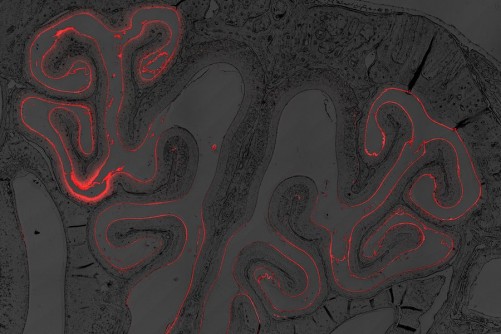A University of Minnesota assistant professor is part of a team that has developed a new way to effectively deliver vaccines through mucosal tissues in the nose that could lead to better protection against pathogens like human immunodeficiency virus (HIV) and SARS-CoV-2, the virus that causes COVID-19.
The researchers tested the technology on mice and non-human primates and found that the vaccine generated strong immune responses, paving the way for further study and development of nasal vaccines.
The study is published in Science Translational Medicine, an interdisciplinary medical journal published by the American Association for the Advancement of Science (AAAS).
Historically, nasal vaccines—which would be administered through a nebulizer or spray—have been difficult to make successfully. The mucus in the nose typically clears out or breaks down the vaccine’s components, such as protein antigens, before they can access underlying tissues to activate the body’s immune cells.
However, nasal vaccines have the potential to generate even more immunity than current vaccines administered by injection with needles. This is because for many diseases that are transmitted through the upper respiratory system, such as COVID-19, nasal vaccines have the potential to trigger immune responses in the exact areas of infection—the nose, mouth, and lungs. Some nasal vaccines do exist, but most use live attenuated pathogens, which cannot be given to people who are immunocompromised.
“Traditional vaccines that are injected are not usually geared toward establishing immunity in these mucosal tissues,” explained Brittany Hartwell, first author on the paper and an assistant professor in the University of Minnesota Twin Cities Department of Biomedical Engineering. “They're more geared toward establishing immunity in the blood—sort of like a backup defense. But the idea of establishing immunity in the mucosal areas, like the nose, is that it establishes more of a frontline defense that can better protect against transmission of these diseases.”
Hartwell said that with this new vaccine, not only did they establish strong mucosal antibody responses, but they also activated really strong antibody responses in the blood.
“So, it's kind of like we're establishing a frontline and backup defense at the same time,” she said.
Hartwell and her team have found a way to help vaccine antigens bypass the mucosal barriers in the nose by engineering them to bind onto a protein called albumin, which naturally occurs in the human body and has the ability to get around these roadblocks. The antigens could then effectively “hitchhike” on albumin to get to their destination—the immune tissues underlying in the nose—to start activating an immune response.
And, the researchers’ vaccine proved effective at generating immunity not just in the nose, but in other mucosal tissues of the body as well, which include the upper respiratory system, lungs, and genitourinary tract. The latter is especially relevant for vaccinating against a virus like HIV, which is transmitted through those sites.
“This is really significant for the field of mucosal vaccination,” Hartwell said. “It shows something new, that we’ve designed a vaccine capable of overcoming barriers to delivery that have historically plagued the development of other mucosal vaccines. It’s particularly relevant right now because we’re all living in the midst of the COVID pandemic that’s continuing to affect our lives. And as long as there’s spread and transmission, the virus has a chance to evolve into new variants with the potential to be harmful. This research shows the development of a slightly different kind of vaccine that could provide even better protection than what we currently have by blocking transmission, preventing us from catching and passing the virus onto others.”
Hartwell is continuing to study and develop this new vaccine technology in her lab at the University of Minnesota Twin Cities and hopes to adapt it to other diseases and illnesses in the future.
The research was funded by the National Institutes of Health’s National Institute of Allergy and Infectious Diseases; the National Cancer Institute; the Marble Center for Cancer Nanomedicine; the U. S. Army Research Office through the Institute for Soldier Nanotechnologies at the Massachusetts Institute of Technology; the Ragon Institute of MIT, Massachusetts General Hospital, and Harvard University; and the Bill and Melinda Gates Foundation.
In addition to Hartwell, the research team included Massachusetts Institute of Technology researchers Mariane Melo, Ashley Lemnios, Na Li, Jason Chang, Laura Maiorino, Tyson Moyer, Neil Dalvie, Sergio Rodriguez-Aponte, Kristen Rodrigues, Murillo Silva, Heikyung Suh, Josetta Adams, J. Christopher Love, and Professor Darrell Irvine; New Iberia Research Center and University of Louisiana at Lafayette researchers Peng Xiao, Crystal Carter, Jane Fontenot, Francois Villinger, and Ruth Ruprecht; Harvard Medical School researchers Jingyou Yu, Makda Gebre, Aiquan Chang, and Dan Barouch.
Source: University of Minnesota College of Science and Engineering
